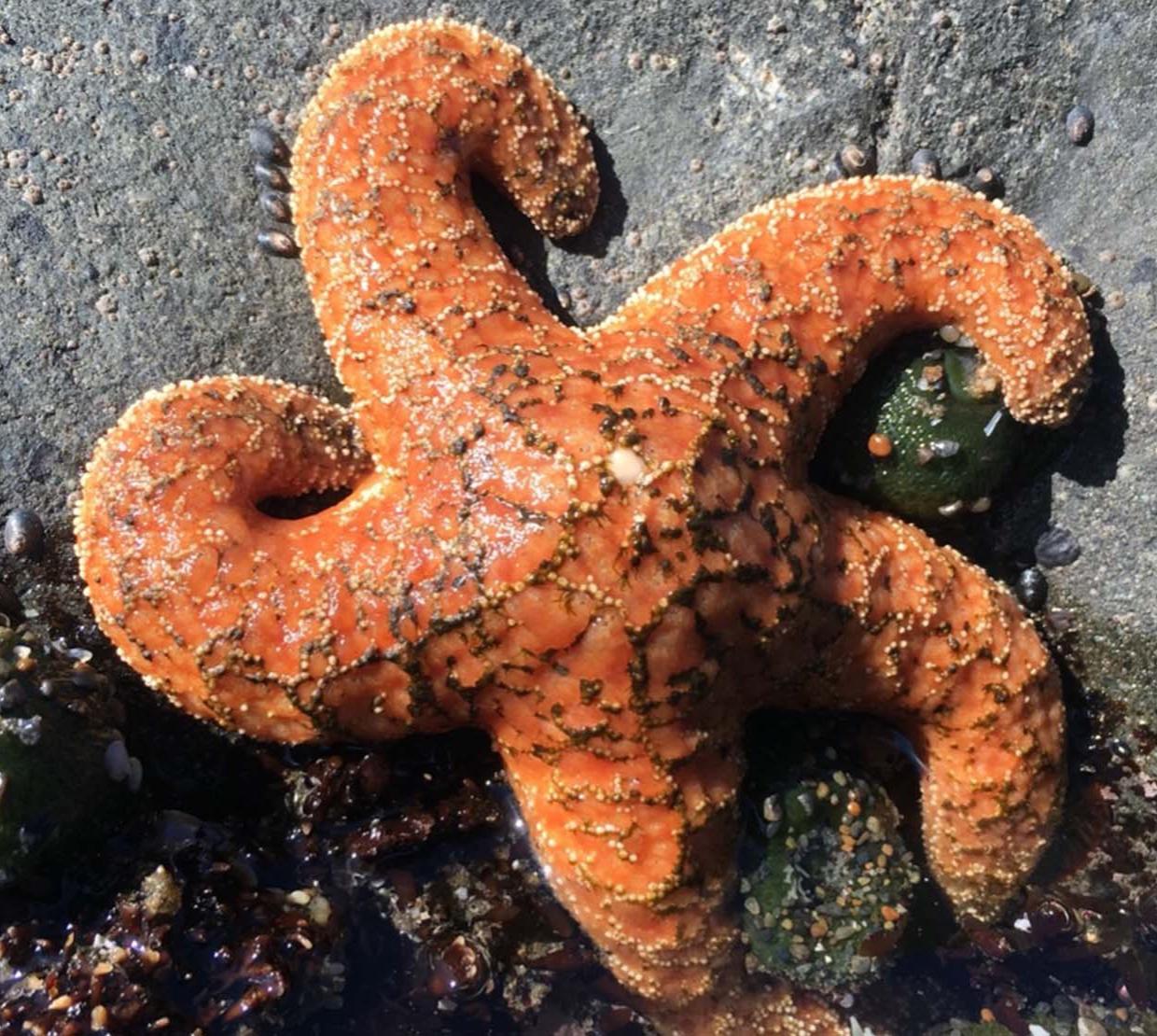Healthy-looking ochre sea stars have minimal genetic difference from those displaying symptoms of sea star wasting syndrome, say Department of Integrative Biology researchers who examined whether genetic variation was the reason some animals went unaffected during an epidemic of the deadly disease.
Without genes promoting resistance to wasting syndrome, the iconic Pacific Ocean sea star’s ability to persist through future outbreaks is in greater doubt, the scientists say.
"The interplay between climate change and disease is threatening wildlife species as never before," said Ph.D. candidate Andrea Burton, who led the genetic variation study. "A changing climate is causing the ocean to warm and those rising sea water temperatures are putting more and more stress on marine ecosystems."
The ochre sea star (Pisaster ochraceus) saw its populations hit hard for three years starting in 2013 by a wasting syndrome epidemic that scientists believe to be the largest marine wildlife disease event in history. Along the Oregon coast, for example, populations underwent declines ranging from 50% to 94%.
To determine what allowed some sea stars to survive this mass mortality event, Burton, research associate Sarah Gravem and Associate Professor of Integrative Biology Felipe Barreto examined a total of 200 individuals to look for genetic variation between healthy specimens and sick ones.
The scientists took note of observable disease symptoms based on a six-level ranking protocol, ranging upward from twisting arms to deflation, lesions, missing arms, loss of grip on rocks and finally disintegration or “melting.”
“Through a number of genomic techniques, we found that genomic differentiation between normal-looking and wasting sea stars was very low,” Burton said. “With little genetic variation to propel adaptation, we definitely have even more concerns regarding how this species of sea star will fare in future outbreaks.”
Read the full story here.





